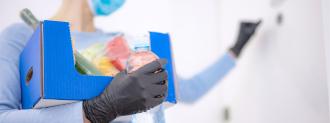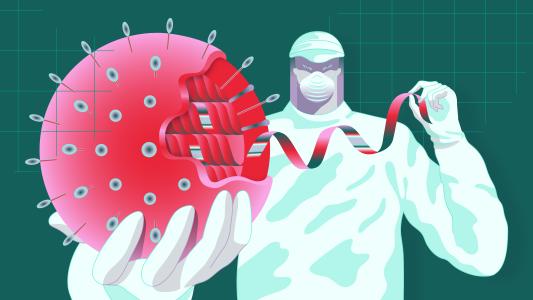The need for social distancing has made the coronavirus outbreak a very lonely experience for many.
However, the situation is also connecting people, with thousands of coronavirus volunteers joining forces to support the most vulnerable members of their communities — and they’re doing so with more than a little help from modern technology.
Coronavirus Volunteers Assemble
Mutual-aid networks have been a fixture of community organizing efforts for decades. Their purpose is to connect those who need help in a community with those equipped to give it, and they often tackle many of the same tasks as charities or government-funded social programs.
But unlike charities, which pay their workers, everyone in a mutual aid network is a volunteer.
And while government agencies can be slow-moving, mutual-aid networks can mobilize and act quickly to deliver help wherever it’s needed.
With an infectious outbreak, speed is essential, so soon after COVID-19 began affecting life in Boston, community organizer Hannah Freedman and three fellow coronavirus volunteers — Sophia Grogan, Miriam Priven, and Anna Kaplan — set out to establish a mutual-aid network in the area, with technology playing a key role in the process.
“We can’t be together but we have to come together.”
Hannah Freedman
The group started by creating a Google document packed with information from health officials, which they shared with neighbors via group text chains. They also created an email address and a phone hotline that neighbors could use to contact them with any coronavirus questions.
Community members with specific needs — food, toilet papers, etc. — could use an online form Freedman’s team built to submit their requests for assistance.
Anyone looking for ways to help during coronavirus could add their name, contact information, and specific offerings to a separate online spreadsheet — and within a week of launch, that spreadsheet contained more than 700 donations.
“This is about doing something to counteract the physical distance the virus forces and finding a new way to live in your community,” Freedman told The New York Times. “We can’t be together but we have to come together because we’re only going to be safe when we help each other.”
Other Ways to Help During Coronavirus
The Boston group’s use of technology to help during the coronavirus outbreak is remarkable, but it’s not singular — across the globe, coronavirus volunteers are using the same resources to organize and support those in need.
One master list — compiled in a Google doc, natch — contains links to more than 140 mutual-aid networks. It also provides valuable information on how coronavirus volunteers can avoid catching COVID-19, while collecting and distributing food, for example.
“It’s a beautiful flowering of mutual aid,” Cindy Milstein, the creator of that master list, told Vox. “It’s a way to organize, but it’s also a way for people to remember the ability of humans to be kind and empathetic and dignified. People are desperate to help each other right now.”
While some people volunteer through mutual-aid networks, others are using Help with COVID, an online marketplace co-created by OpenAI CEO Sam Altman that’s designed to connect coronavirus volunteers with ongoing response projects.
Anyone interested in volunteering can sign up on the site and share details on what they can offer to the response effort. Established projects, meanwhile, can add their details to the website, noting what they’re looking for in volunteers and how they can connect.
Rather than directly connecting coronavirus volunteers with those in need — like a mutual aid network might — the projects listed on Help with COVID largely focus on bringing tech- or science-based coronavirus response efforts to fruition.
For example, a Help with COVID project might not need volunteers to deliver groceries to people in need, but it could be looking for people capable of building a mobile app that connects volunteers with local seniors.
We’re in This Together
Whether through Help with COVID, one of the many mutual aid networks, or another project, the number of volunteers looking for ways to help during coronavirus has been incredibly heartening.
The outbreak is far from over — and it may very well get worse before it gets better — but it’s important to remember that humanity has faced pandemics before and survived.
We’ll do the same with the coronavirus, and thanks to modern technology, we’re uniquely equipped to help one another this time around.






